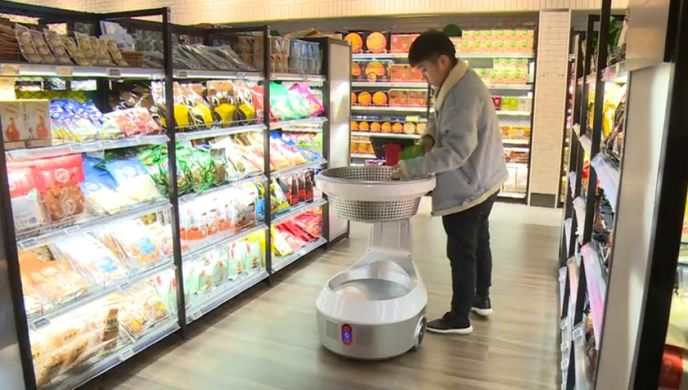Nielsen: 81% of Chinese consumers are optimistic about their financial situation
Nielsen: 81% of Chinese consumers believe that their financial situation is better than five years ago. At the same time, 84% consumers think their financial situation is comfortable and they are able to spend freely.
Beijing, April 15, 2019 – According to Nielsen’s latest global premium products survey, markets around the world have faced fluctuating economic conditions in recent years, with many economies experiencing varying degrees of recession. Amid these unpredictable conditions, Chinese consumers feel optimistic about their financial situation, and 81% of Chinese consumers feel they are better off financially than they were five years ago, which is much higher than the global average rate (58%). Meanwhile, 84% consumers think their financial situation is comfortable or able to spend freely, which is 4% higher than last year. Compared with consumers in North America and some developed countries in Europe who feel pessimistic about their financial situation, Chinese consumer’s attitude toward their financial situation is more positive
“We know that Chinese consumers are confident in their futures. We see steady progress made in employment、international trade、investment、and various economic indicators suggesting strong reasons for consumers to have a positive outlook. With China’s GDP at 6.6%, and ranking first among the top five economies in the world, we expect Chinese consumers to remain optimistic in coming years,” said Andy Zhao, president of Nelsen China.
Driving factors behind optimistic financial attitude
Chinese consumers’ optimism about their financial situation is the result of the combination of personal economic conditions, employment expectations and consumer willingness. According to the National Bureau of Statistics, the economic situation of individuals has been greatly improved over the past five years. From 2014 to 2018, the average personal salary has increased by 29%, and personal disposable income has increased by 32%. It is estimated that in 2022, the average personal salary will increase by 33%, and personal disposable income will also increase by 24%.
According to National Bureau of Statistics, the number of new jobs in urban areas last year was 13.61 million, which was 123.7% of the annual target, created a new record high and exceeded 13 million for the sixth consecutive year. There are more job opportunities and larger expanded scale of employment. At the same time, according to Nielsen’s latest report on consumer trends, the employment expectation of Chinese consumers jumped from 70 points in 2017 to 75 points, and the consumption expectations in third- and fourth-tier cities are particularly high, The employment expectations of consumers in third-tier cities raised from 62 to 67, and in fourth-tier cities the employment expectations jumped from 65 to 71. From different geographical divisions, employment expectations are bright in the northern and western region. Employment expectations in the northern region have increased from 65 to 69 points in the third quarter, and at the same time, employment expectations in the western region have soared from 61 to 68 points, both achieved substantial growth.
“With continuing urbanization, development of industry, and strong employment policies, consumers in lower-tier cities are gaining in affluence. At the same time, these lower-tier cities are growing in importance for retailers and manufacturers looking for China’s next wave of growth,” said Andy Zhao.
From the perspective of consumer willingness, Nielsen’s consumer confidence report data for the fourth quarter in 2018 showed that Chinese consumers’ spending willingness is 60 points, which had an increase of 3 points from 2017.
The pursuit of quality life is becoming a new point of consumption growth
While income and consumer sentiment is rising, consumption patterns of Chinese consumers are also changing. With the rapid development of e-commerce, logistics, and new retail formats, goods and services are easier to obtain than ever. The proportion of Chinese consumers in education, culture, entertainment and other categories is rising gradually. Among them, tourism, leisure and entertainment have an obvious upward trend. People’s willingness to consume has gradually changed from satisfying basic needs to improving the quality of life.
Nielsen research shows that in the past five years, 56% of Chinese consumers spend more on grocery fees, which means more and more Chinese consumers are willing to choose high-end daily necessities as a necessity for daily consumption. At the same time, Figures from the national tourism administration show that in 2018, the number of domestic tourists reached 5.5 billion, up 10.8% year-on-year, and the total number of inbound and outbound tourists reached 291 million, an increase of 7.8% year-on-year. This is consistent with Nielsen’s findings. There are 54% of Chinese consumers spend more on tourism. In addition, There are also other categories that attract Chinese consumers to increase spending, for example, leisure and entertainment (51%), eating out (50%), and education (50%). From this, it can be found that with the rapid growth of personal disposable income, consumers have growing demand for quality of life products.
“We see strong consumer willingness to spend and high demand for quality of life products and services. This is both an opportunity and a challenge for retailers and manufacturers. In a dynamic market like this, the key for winning is understanding the changing demand and behavior of the Chinese consumer,” Andy Zhao concluded.
ABOUT NIELSEN
Nielsen Holdings plc (NYSE: NLSN) is a global measurement and data analytics company that provides the most complete and trusted view available of consumers and markets worldwide. Our approach marries proprietary Nielsen data with other data sources to help clients around the world understand what’s happening now, what’s happening next, and how to best act on this knowledge. For more than 90 years Nielsen has provided data and analytics based on scientific rigor and innovation, continually developing new ways to answer the most important questions facing the media, advertising, retail and fast-moving consumer goods industries. An S&P 500 company, Nielsen has operations in over 100 countries, covering more than 90% of the world’s population.



